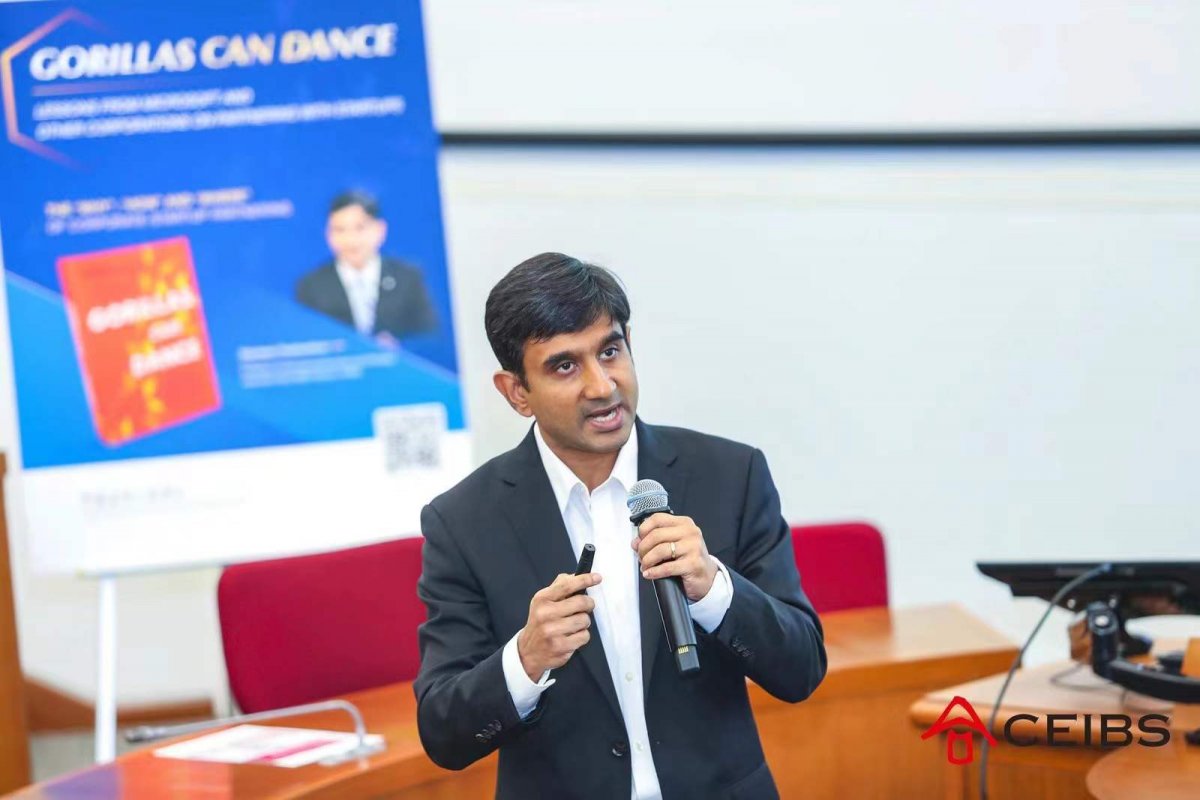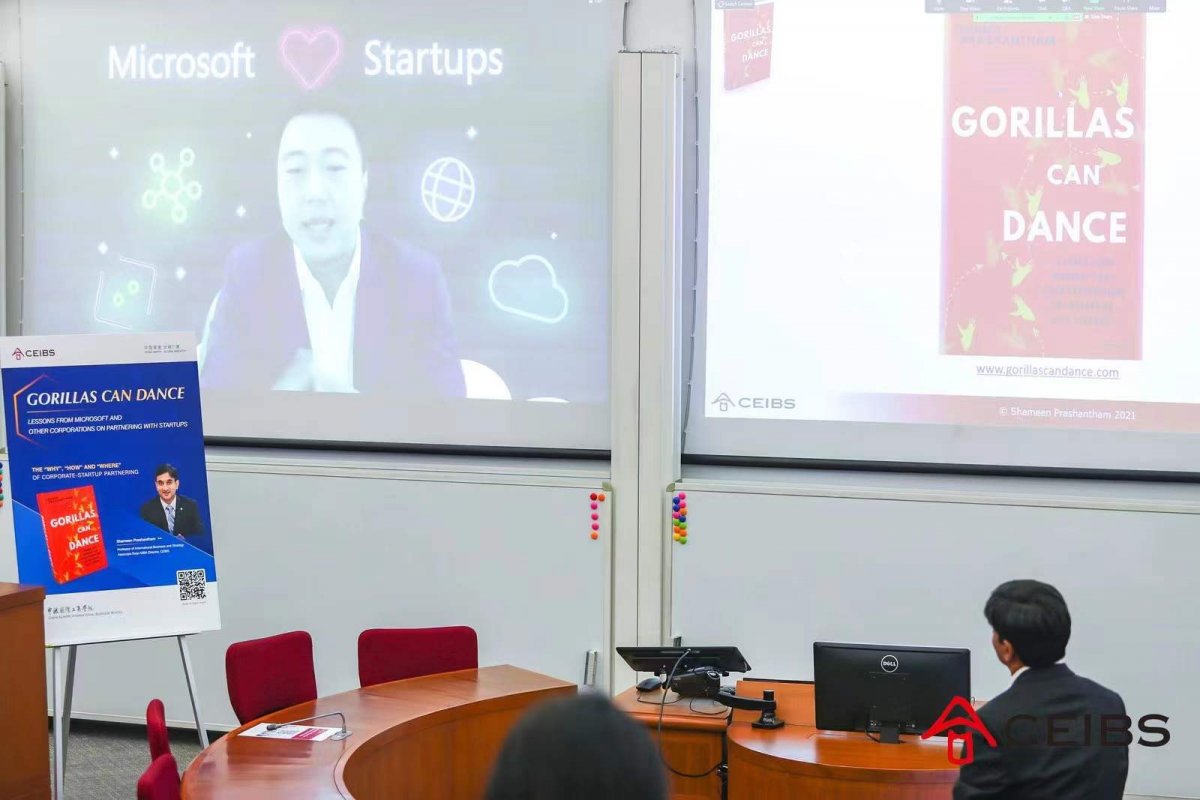Corporation-startup partnerships offer win-win outcomes
December 16, 2021. Shanghai — For large corporations seeking to be more entrepreneurial, partnering with startups is an effective way to bring in fresh ideas and entrepreneurial spirit, a CEIBS Executive Forum audience heard this evening.
The event, featuring CEIBS Professor of International Business & Strategy and MBA Director Shameen Prashantham and Microsoft Greater China Chairman and CEO Dr. Hou Yang, explored the “why,” “how,” and “where” of corporate-startup partnering.
“There is a potential win-win for these partnerships in the sense that there are complementary capabilities that these companies have. For example, the large corporations have scale, while smaller startups have agility,” Prof. Shameen said.
Disparities in goals, structure and attention, however, often make it difficult for startups to connect with the right people in large corporations in order to launch such partnerships.
In order to address this and other related challenges, Prof. Shameen explained, corporations can leverage the three pillars of “synergy” (i.e., establish conditions of mutual benefit), “interface” (i.e., establish a mechanism to engage with entrepreneurs), and “exemplars” (i.e., nurturing and showcase promising cases).
“The point is that working with startups, for a big company, actually requires thoughtfulness in terms of being able to overcome these asymmetries,” Prof. Shameen continued.
Furthermore, he added that distinct startup partnering capabilities need to be developed, including freeing entrepreneurial individuals to make things happen, galvanising support and getting buy-in from leaders, and consolidating initiatives to make them coherent with core strategies.
Prof. Shameen’s message was echoed by Dr. Hou during his discussion of how Microsoft partners with startups and how who the company works with has evolved over the years.
“Right now, we focus on a couple dimensions, with the number one dimension coming back to the fundamentals: Which company can we better enable? Which company will have a much higher likelihood of being successful? Also, what is the synergy that we can create together?” Dr. Hou said.
“The second dimension comes down to the products and technology: How do we have a product level integration that will better serve our customers by creating better products and solutions?” he went on.
Looking into the “where” of partnering, Prof. Shameen highlighted the importance of taking a global mind-set and making adaptations and adjustments according to different locations.
“One of the things that has been absolutely fascinating for me to observe is how Microsoft has engaged with startups in different parts of the world, from Silicon Valley to London, from Bangalore to China,” Prof. Shameen said.
As the only country to host two Microsoft accelerators, China has enormous market potential in terms of the rapid growth of innovations developed by startups and a large number of unicorns.
“Part of our value to the startup community is global reach and global support.” Dr. Hou explained. “When Chinese startups expand into other regions, we help them not only with the technology and infrastructure, but also with compliance, security, and navigating the local talent market.”
Furthermore, he told the audience that different industries should also be taken into consideration when engaging with startups, both locally and globally.
“If you talk about autonomous driving or semiconductors, pharmaceutical, healthcare or even manufacturing right here in China, these are all sectors that we are really expanding into in terms of our collaborations and presence,” Dr. Hou concluded.





















